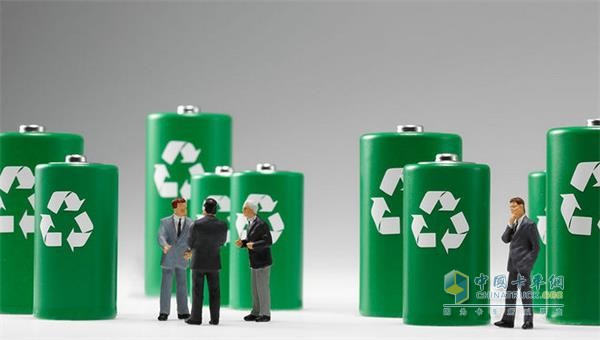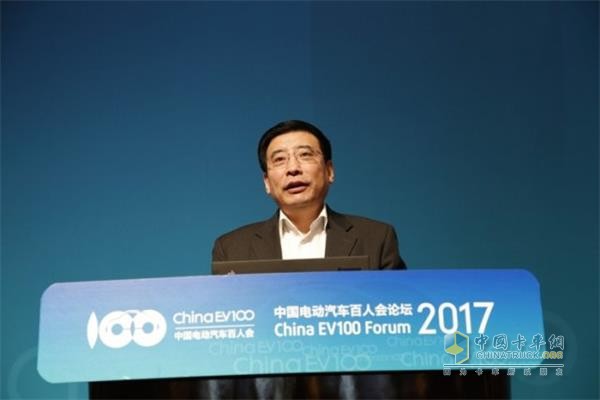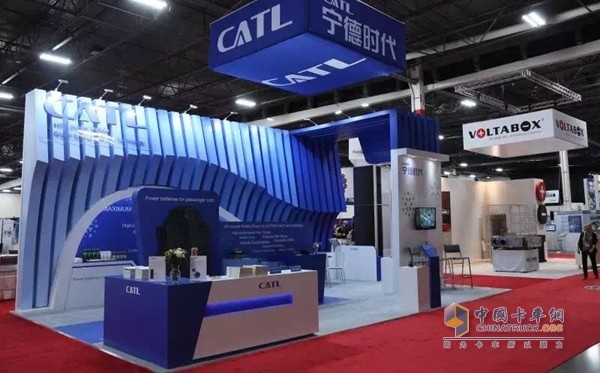Then, how can the power battery industry crack the "Matthew effect" and how can battery companies "backwardly attack"? Polarization into dysentery overcapacity adds new disease According to the data from the China Association of Automobile Manufacturers (CATA), before 2015, cumulative sales of new energy vehicles in China exceeded 400,000 units. In 2016, 517,000 new energy vehicles were produced and 507,000 vehicles were sold, representing an increase over the same period of the previous year. 51.7% and 53%. This means that China's new energy vehicles ranks first in the world in terms of output and sales for two consecutive years. At the same time, the cumulative amount of promotion exceeded 1 million, accounting for more than 50% of the global market. China Automobile Association expects that the sales of new energy vehicles in China will reach 800,000 in 2017. According to the objectives set forth in the “13th Five-Year Plan†national strategic emerging industries development plan, by 2020, China’s new energy vehicles will achieve more than 2 million units of production and sales in the same year, and cumulative production and sales will exceed 5 million. Some experts pointed out that sales of new energy vehicle companies depend on the output of battery companies. Based on this, in recent years, along with the explosive growth of new energy vehicles, power battery capacity has also rapidly increased. Since 2015, the power battery has ushered in a large-scale expansion of production, such as the traditional equipment manufacturing companies, new energy car companies, Internet giants and other multi-channel capital competition layout, with a view to seize the opportunities in the high-speed development of the market. From the view of capacity expansion, as of the end of 2016, the new capacity of the power battery industry increased by nearly 35GWh (1GWh = 1 million kWh) compared to the same period, and the total volume was almost three times that of the full year shipments two years ago. In 2016 alone, the capital invested in the field of power batteries has exceeded 100 billion yuan, which is just a microcosm of the “flying†production capacity in the field of power batteries. In the industry's view, if all these capacities are released, the power battery capacity will reach 170GWh/year. The analysis report from Industrial Securities shows that the demand for power batteries in China is about 28GWh in 2016, and it is expected that the demand for power batteries will exceed 90GWh by 2020. "If you look at the ratio of 1:10 for electric buses and electric passenger vehicles, 170Gwh can meet the total demand for an annual output of 500,000 electric buses and 5 million electric passenger cars." Professor at Tsinghua University Ouyang Minggao believes that the industry may reach capacity saturation in the next three to five years. Entering 2017, the pace of capacity expansion has not stopped, and companies that engage in power batteries have shown greater enthusiasm. According to reports, many power battery companies, including BYD, Tianjin Lishen, Waterma, Tianneng, Guoxuan Hi-tech, Yiwei Li-Neng, Nandu Power, Shanshangufen, Wanxiang A123, Yiwei Lithium, etc. Has or plans to launch a new production line. Obviously, according to the current situation, the growth rate of domestic power battery capacity reserves has far exceeded sales growth. Coupled with the increase in the price of raw materials, the pressure on the industry's cost space has soared, and the power battery industry has begun to fall into structural pains. However, it is worth noting that the power battery companies are not unaware of the risks. In the face of the 100 billion yuan cake that continues to improve in 2017, most companies still choose to quickly walk through the dual barriers of strict policy control and lagging demand. It can be foreseen that, with the booming of new vehicle builders and the bundling of capital, supply-side production capacity will inevitably expand, but due to tightening of the subsidy policy, the slowdown in the growth of the application-side market has become a trend, and excess capacity may further increase. Intensified. Blowing away mad sand until gold "the strongest heart" is still available All of a sudden, it has become a true portrayal of the power battery industry. However, the great leap forward in production capacity does not mean that the industry's overall level of technology has improved. Instead, it increasingly highlights the dilemma of "insufficient high-end capacity and low-end excess capacity." Earlier this year, Miao Miao, minister of the Ministry of Industry and Information Technology, made a point of painsight at the Electric Vehicles' Centennial Conference. "We have not yet achieved a revolutionary breakthrough in the core technology of our power batteries, and our performance needs to be greatly improved. Charging infrastructure needs to be accelerated." At the meeting, Miao Wei said that in the field of new energy buses and trucks, there has been signs of structural overcapacity, and the problem of high-end capacity of power batteries and low-end overcapacity has been further aggravated. "Not only that, but the key issues in the field of power batteries are the low level of technology and the lack of battery standards. At the same time, there are many problems with low manufacturing qualification, poor safety, and high costs." It can be said that the development of the new energy automotive industry puts higher requirements on the power battery, especially for battery quality, energy density, safety factor, etc. At the same time, battery manufacturing is also moving toward information and stabilization. In the final analysis, the core competitiveness of power battery companies is through technological innovation, production automation, and standardization of management, accelerating the pace of battery intelligent manufacturing, and pushing China’s battery products into higher-end markets to meet the high-quality requirements of new energy vehicles. Instead of blindly expanding production capacity, we must focus on production instead of quality. In addition, due to the tightening of the subsidy policy, the slowdown in the growth of the application-side market has become a general trend, and the power battery related to the fate of new energy vehicles has also seen a slump in volume and price since the beginning of this year. How to break the ice has become a top priority for battery companies. "The three branches of bamboo outer flower, spring plumbing duck prophet." BYD, Ningde times, Guoxuan Hi-tech, Waterma and other industry benchmarking companies understand this reason, in the promotion of quality, expansion of high-end production capacity in action frequently. Perhaps the biggest move is BYD. In 2016, BYD, which won global sales of new energy vehicles, saw rapid growth in power battery production. In the first half of 2016, it ranked second in the world's production of power battery manufacturers, second only to Panasonic, which supplies power batteries for Tesla. All along, BYD has adopted a closed vertical production model and the battery is self-sufficient, allowing some automakers who voluntarily go out to buy batteries to eat a lot of closed doors. Recently, BYD began to re-integrate and adjust the industrial chain to separate the power battery plates and supply it to other automakers. As a strong competitor of BYD in China, Ningde's era has risen through adjustments. In the Ningde era, walking on the two legs of lithium iron phosphate and tri-lithium, they entered the “friend circle†of BMW, Geely, BAIC, and GAC, and Hyundai also chose the Ningde era as the first battery supplier in China. In order to further enhance its competitiveness, Ningde also established two joint ventures with SAIC Motor and would like to complement the main engine plant to complement the entire industry chain. Waterma is also accelerating the upstream and downstream enterprises to hold group warmth. The Waterma Innovation Alliance is jointly occupying the market of new energy vehicles with the entire industry chain. There are 34 cities that have signed an agreement, aiming to sign the city's traditional car ownership in the next five years. The 30% is replaced by the alliance's new energy vehicle. At the same time, Yinlong Zhuhai is working with Gree to accelerate the layout of batteries, energy storage, and new energy vehicles. At present, although lithium iron phosphate batteries account for more than half of the country's power battery market, it is still the protagonist, but the proportion is gradually decreasing. The share of Sanyuan, lithium manganate and lithium titanate batteries has increased. The lithium-ion battery industry consolidation is continuing. BYD, which is known for its lithium iron phosphate, shouted the slogan “Electric·Future Dynasty Creation†this year, and was “ambiguous†in the new energy market. However, it's not just BYD who has taken this throne. As many companies accelerate their innovations in battery technology and business models, competition has increased significantly. The global power battery line is intricate, various advanced technologies emerge in endlessly, and battery technology with a cruising range of over 500 kilometers and fast charge can be achieved in 15 or even 10 minutes is entering the market. Hydrogen fuel cells, called the ultimate solution for new energy vehicles, are also being introduced to the market by Toyota, Honda, and other car makers. In addition, the graphene battery positive force is out of the laboratory, trying to approach the industrialization step by step from the technology and cost. The future is full of possibilities. As the world's largest market for new energy vehicles, China has provided an excellent stage for innovation in power battery technology. Can China's new energy vehicle industry, which carries the mission of passing vehicles in the corner of China’s auto industry, withstand the test of global market competition? The key to achieving overtaking of corners is the innovation and enhancement of the core technology of power batteries. "After the big waves ebbing sand, you will see the real gold deposit." China's manufacturing of power batteries is worth looking forward to!
fertilizer pellet machine can produce 2-8mm diameter organic and compost fertilizer pellet, biology organic or compost fertilizer from animal manure.
fertilizer pellet machine has low temperature pelletizing process . pellet shaping is high, biological bacteria survival rate is larger than 98%.
fertilizer pellet machine has full automatically lubricate spare parts oil systems, which can automatically lubricate spare parts --such as rollers, vertical shaft ,gear, bearings, very convenient to operate, but other supplier machines need to add grease after working four hours.
Organic Fertilizer Machine,Organic Fertilizer Making Machine,Organic Fertilizer Production Line,Organic Fertilizer Production Equipment Shandong Kingoro Machinery Co., Ltd , https://www.kingoromachinery.com How the Power Battery Industry Breaks the "Matthew Effect"
How the Power Battery Industry Breaks the "Matthew Effect"  Miao Wei, Minister of the Ministry of Industry and Information Technology
Miao Wei, Minister of the Ministry of Industry and Information Technology  Ningde Times
Ningde Times
Stronger stronger battery industry how to crack the "Matthew effect"
At present, China's power battery industry is increasingly showing a trend of “stronger stronger and weaker weakerâ€. The structural excess of power batteries has shown signs of inefficiency. The problem of high-end production capacity and low-end overcapacity is further aggravated, and battery capacity appears. Adjust shocks or become inevitable.